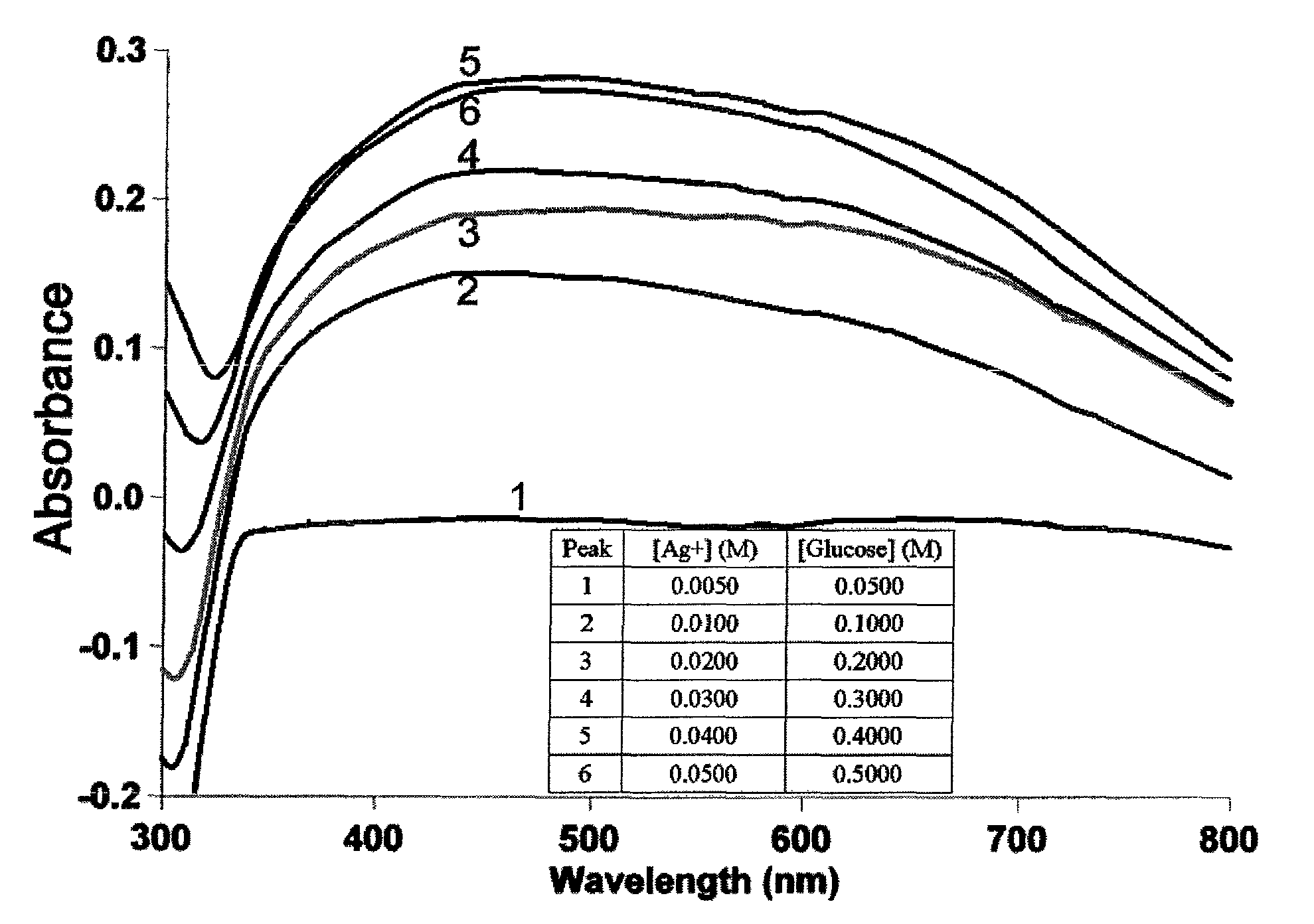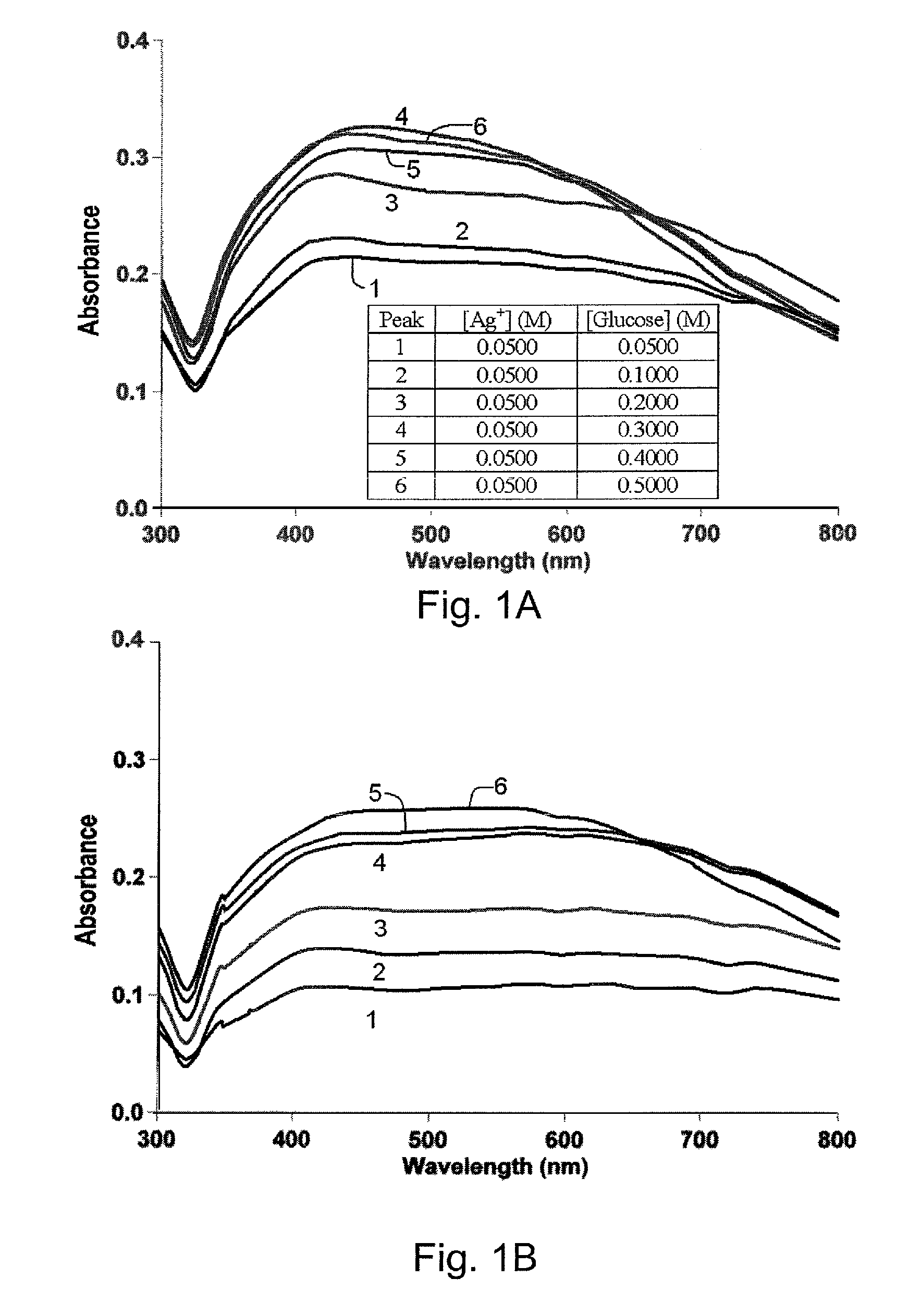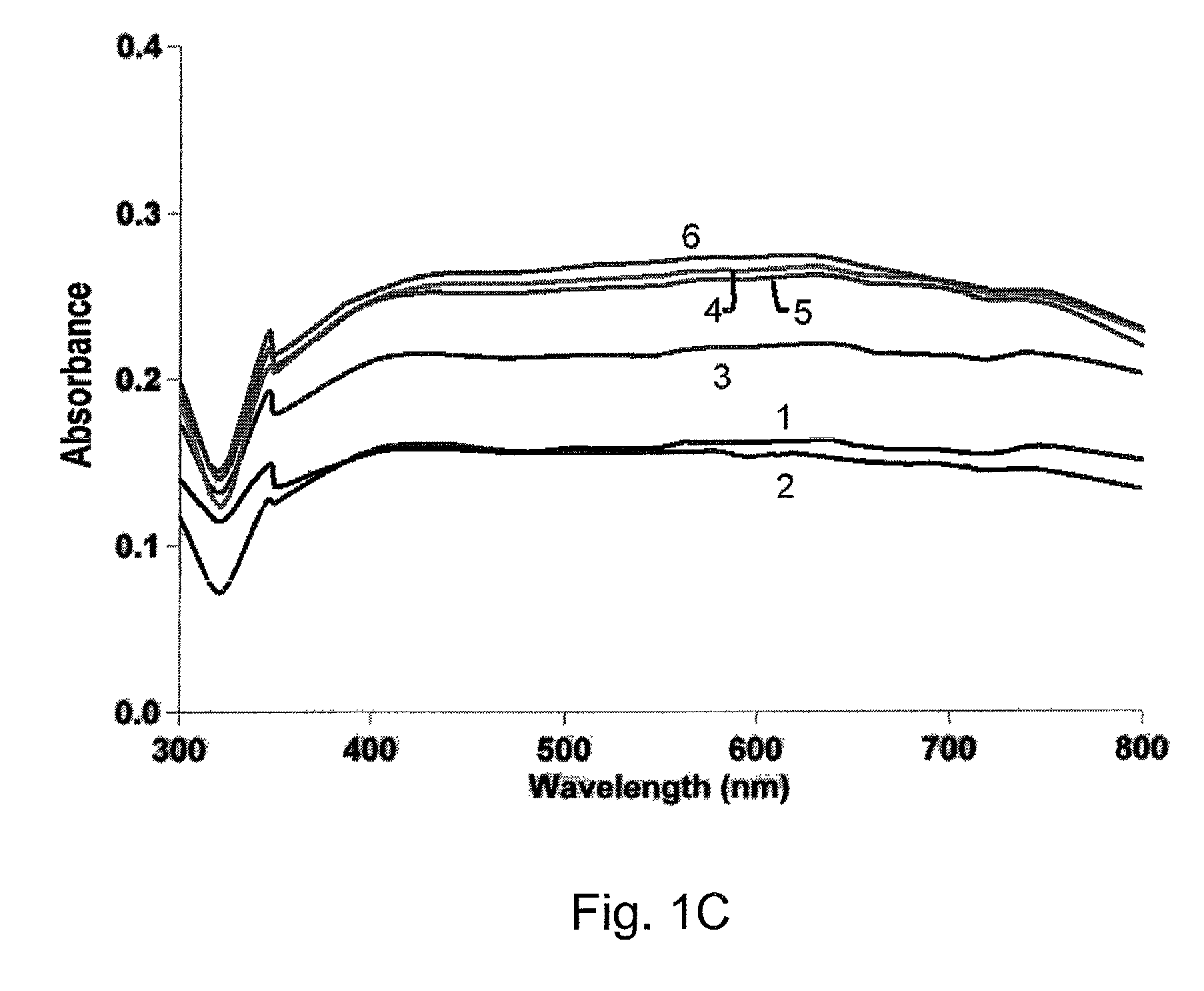Household microwave-mediated carbohydrate-based production of silver nanomaterials
a silver nanomaterial and microwave-mediated technology, applied in the field of nanotechnology, can solve the problems of ionic silver being abandoned for such uses, tedious and troublesome, and the same problems of nanotechnology, and achieve the effect of reducing the energy needed for heating the synthesis reaction and simple and inexpensive methods
- Summary
- Abstract
- Description
- Claims
- Application Information
AI Technical Summary
Benefits of technology
Problems solved by technology
Method used
Image
Examples
example 1
[0037]0.05 M of silver nitrate and 0.5 M carbohydrate reductant (glucose) were admixed in autoclaved reverse osmosis water. Immediately after mixing, the reaction mixture was microwaved in a standard household microwave oven at the highest temperature setting for about eight (8) seconds until the mixture began boiling. The reaction mixture was then placed in a centrifuge for ten minutes at 10,000 rpm in order to separate the resulting silver nanoparticles from the supernatant containing the unreacted carbohydrate reductant and unreacted silver nitrate. After separation and collection, the silver nanoparticles were washed twice with autoclaved reverse osmosis water and resuspended in autoclaved reverse osmosis water until the desired concentration was reached. The remaining supernatant was treated with an excess of sodium chloride and processed to recover silver ions therefrom.
example 2
[0038]Nanoparticles resemble plasma wherein the free electrons form a conduction band surrounding the positively charged nuclei. A collective excitation of these electrons near the surface of the nanoparticle gives rise to Surface Plasmon Resonance. Electrons in the conduction band of a particle with a certain size and shape are limited to specific transverse oscillations via interaction with light of suitable wavelength. Therefore, metallic nanoparticles show characteristic absorption spectrum in UV-Vis region, with a Dipole Plasmon Resonance (DPR) or λmax that depends on the size of the particles. A broad absorbance peak (380-470 nm) as shown in FIG. 1A is indicative of surface plasmon absorption of metallic silver nanoparticles. To determine whether glucose concentration has any effect on nanoparticle formation, reactions were carried out with varying glucose concentrations. A 10-fold molar excess of glucose produced maximum DPR absorbance. The ratio was critical as a slight chan...
example 3
[0039]It was determined that the length of microwaving had an effect on the nanoparticles formation. An additional 10 seconds of microwaving did not result in noticeable visual differences in the color of the reaction mixtures. However, the absorbance wavelength of silver nanoparticles showed a red shift to ˜435 nm as shown in FIG. 1B. This shift was due to the additional reaction time that allowed more Ag+ to be reduced to Ag0 atoms and nucleate thereby giving rise to larger crystalline structures that have higher absorbance wavelengths. A further 10 seconds of microwaving did not produce the same red shift on the main peak but the absorbance intensity for wavelength greater than 500 nm increased thereby indicating more aggregation as shown in FIG. 1C. Moreover, no visible aggregation was observed in the reaction tube that was left at room temperature until after 14 days had passed. This was likely due to the excess glucose in the reaction mixture that was acting both as a capping ...
PUM
| Property | Measurement | Unit |
|---|---|---|
| size | aaaaa | aaaaa |
| size | aaaaa | aaaaa |
| size | aaaaa | aaaaa |
Abstract
Description
Claims
Application Information
 Login to View More
Login to View More - R&D
- Intellectual Property
- Life Sciences
- Materials
- Tech Scout
- Unparalleled Data Quality
- Higher Quality Content
- 60% Fewer Hallucinations
Browse by: Latest US Patents, China's latest patents, Technical Efficacy Thesaurus, Application Domain, Technology Topic, Popular Technical Reports.
© 2025 PatSnap. All rights reserved.Legal|Privacy policy|Modern Slavery Act Transparency Statement|Sitemap|About US| Contact US: help@patsnap.com



